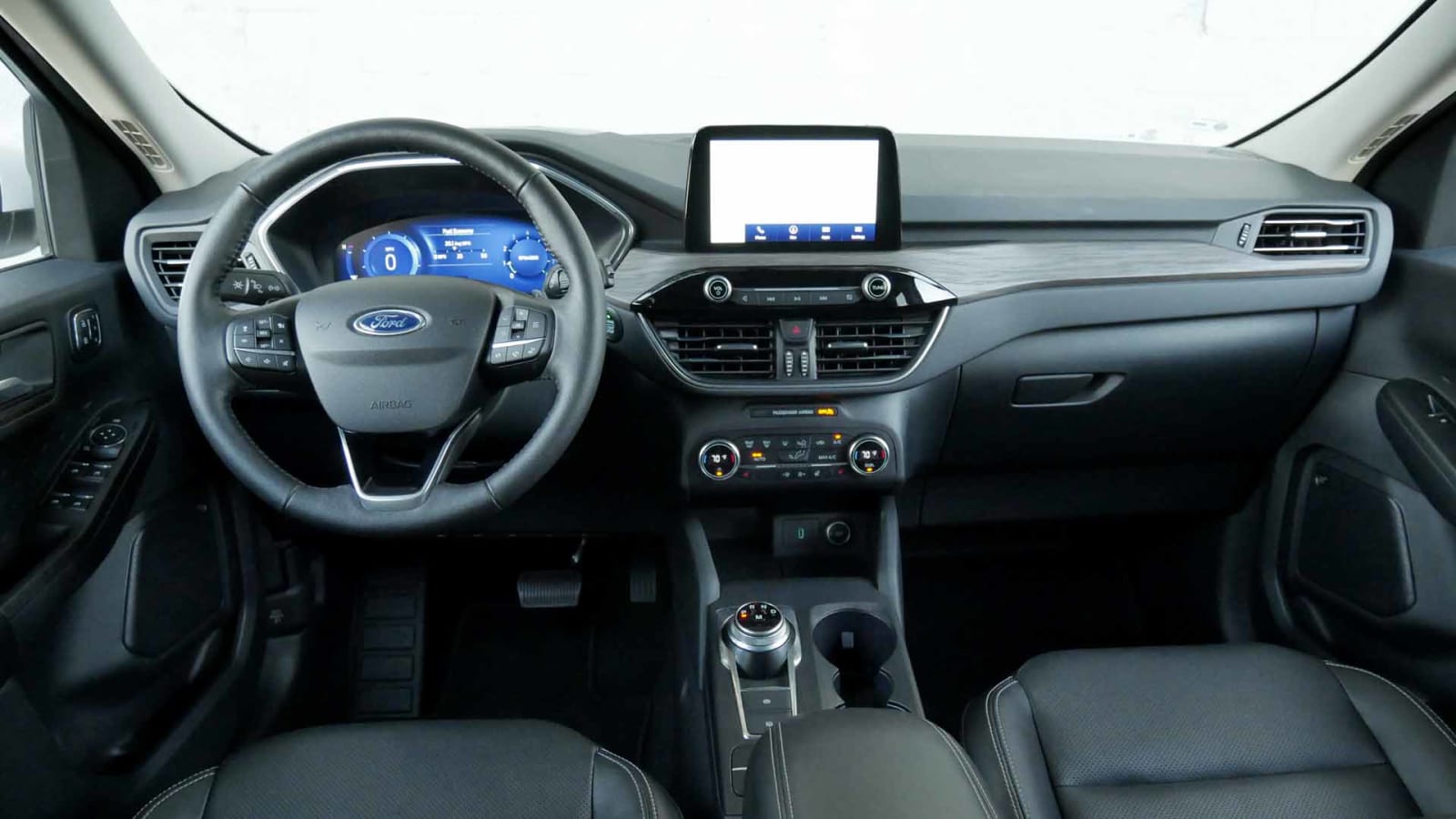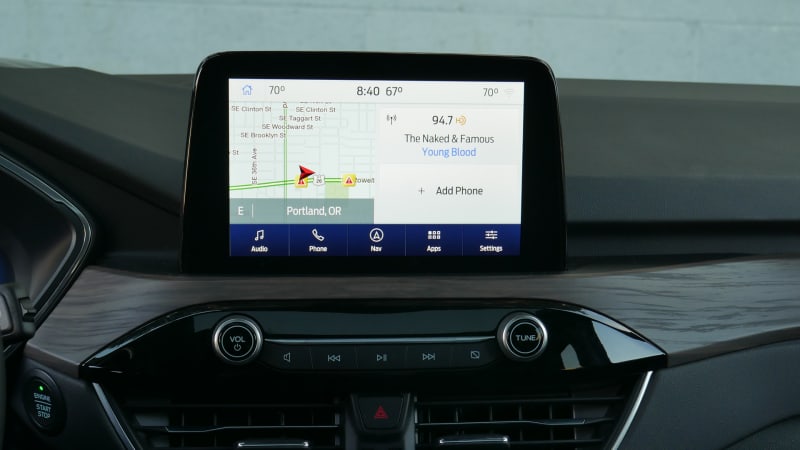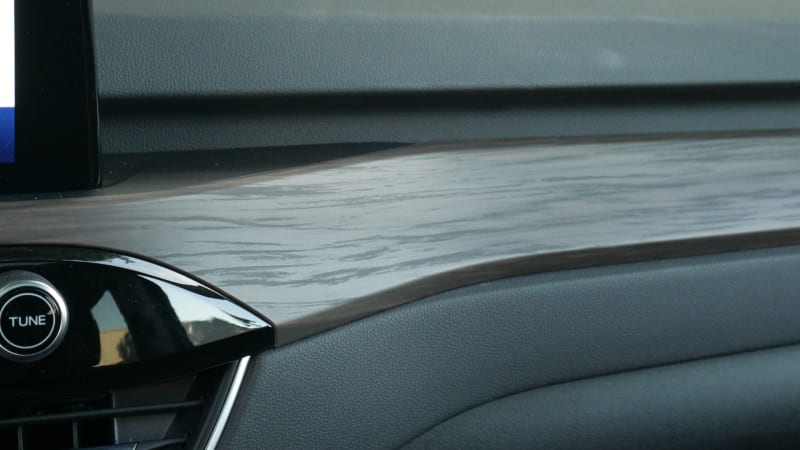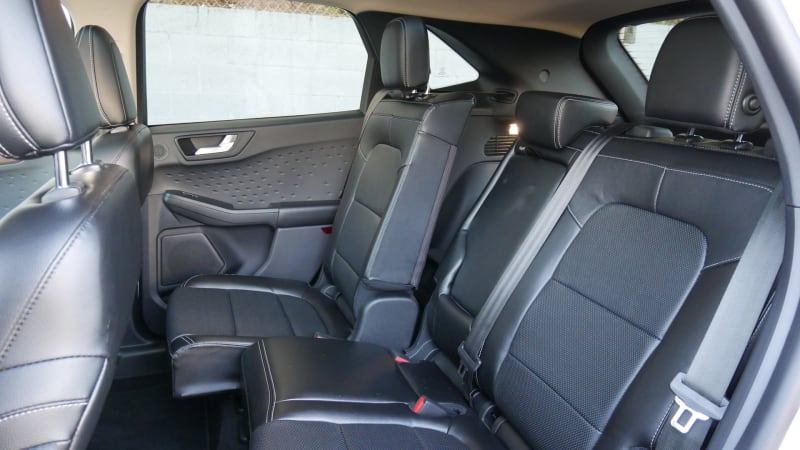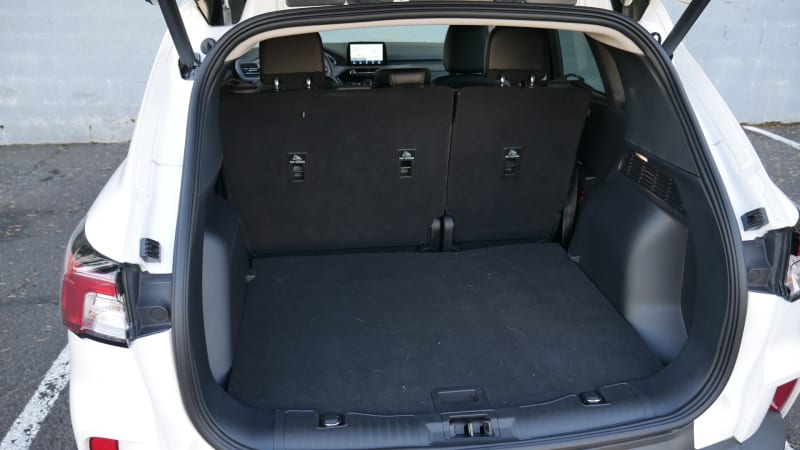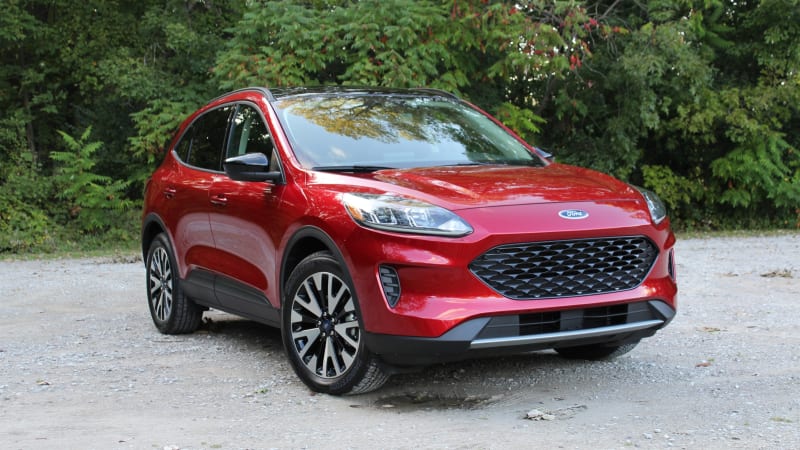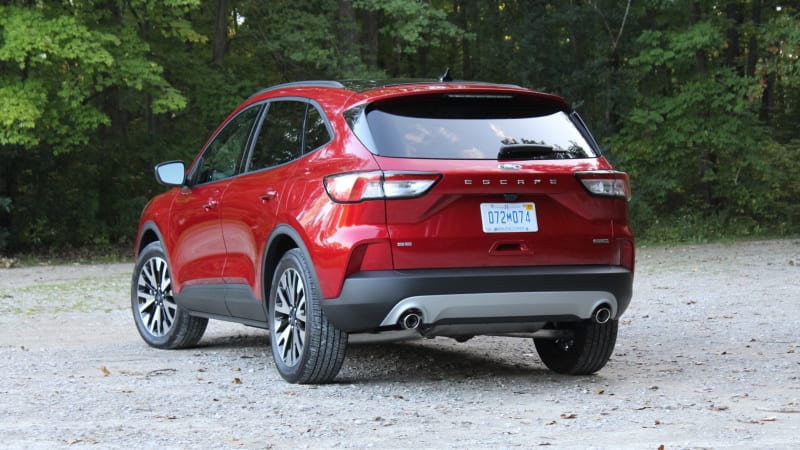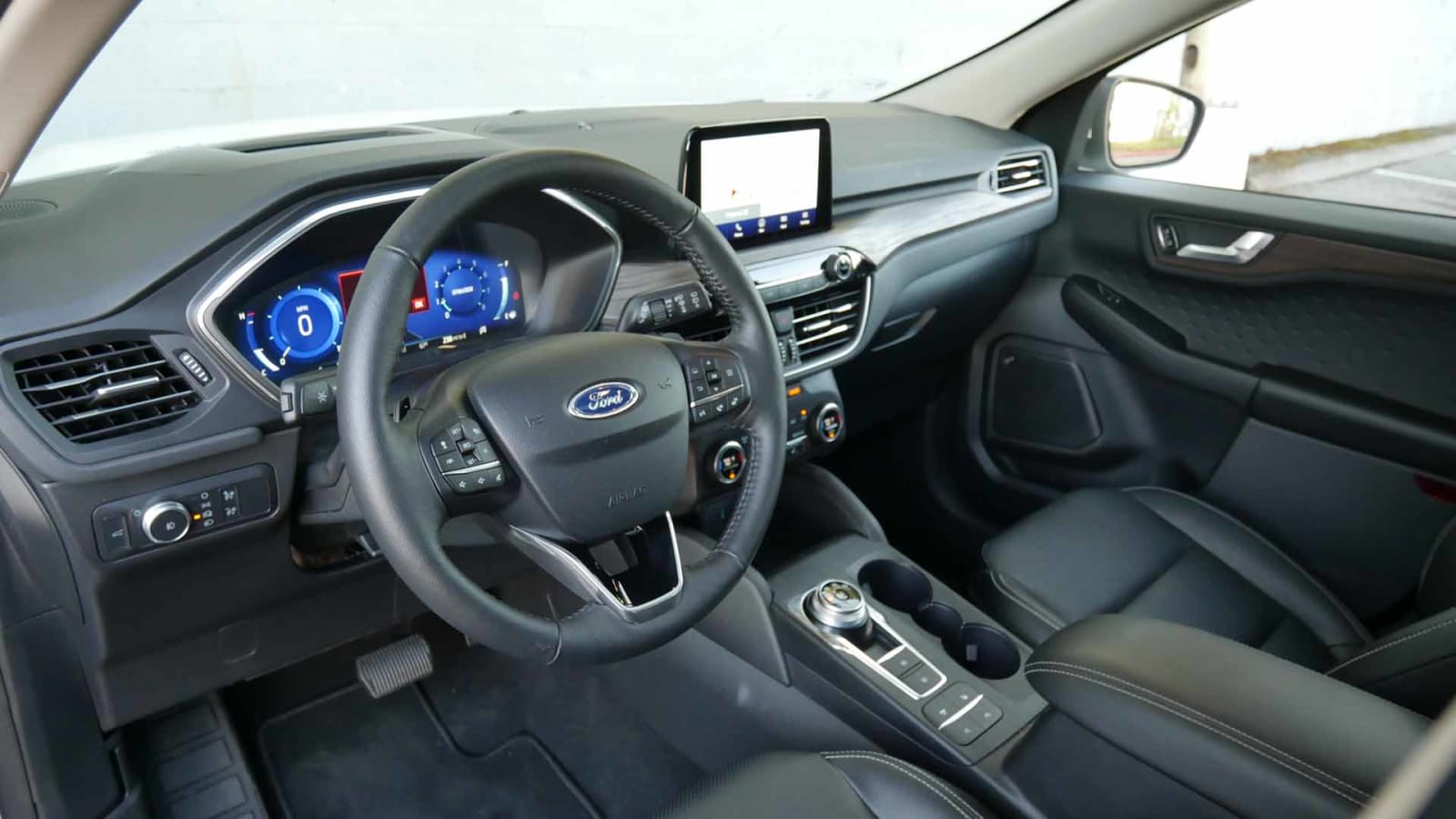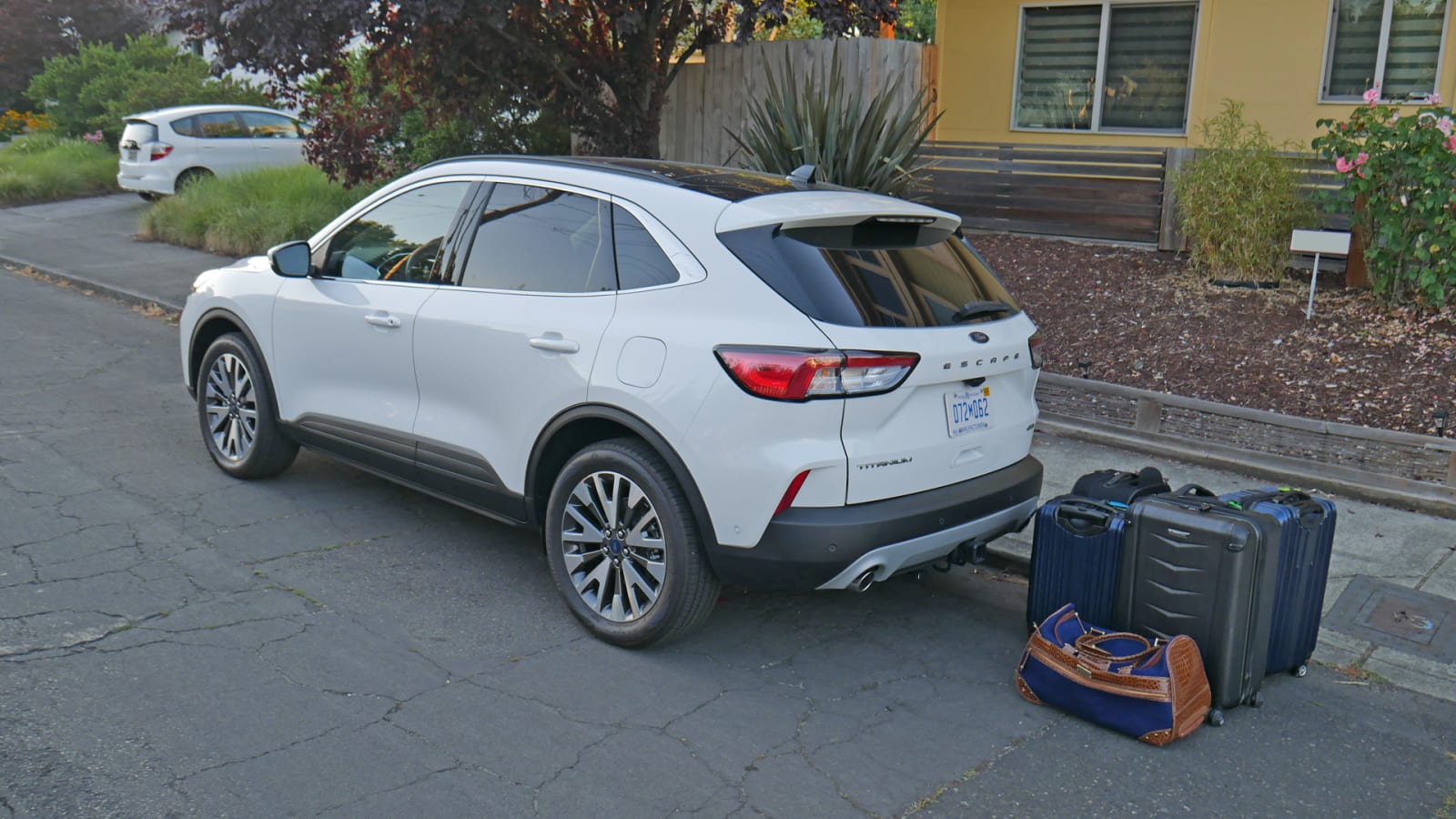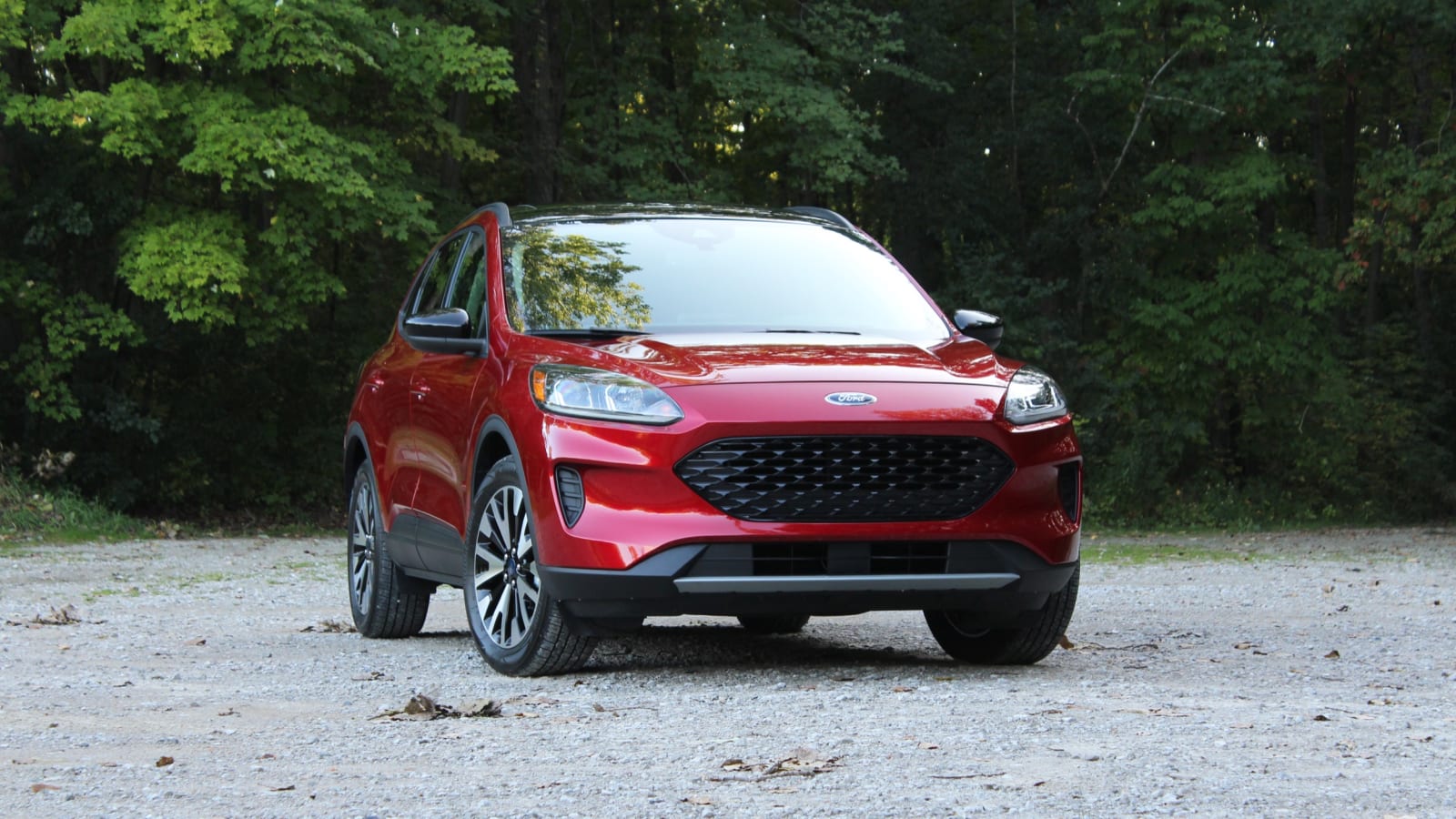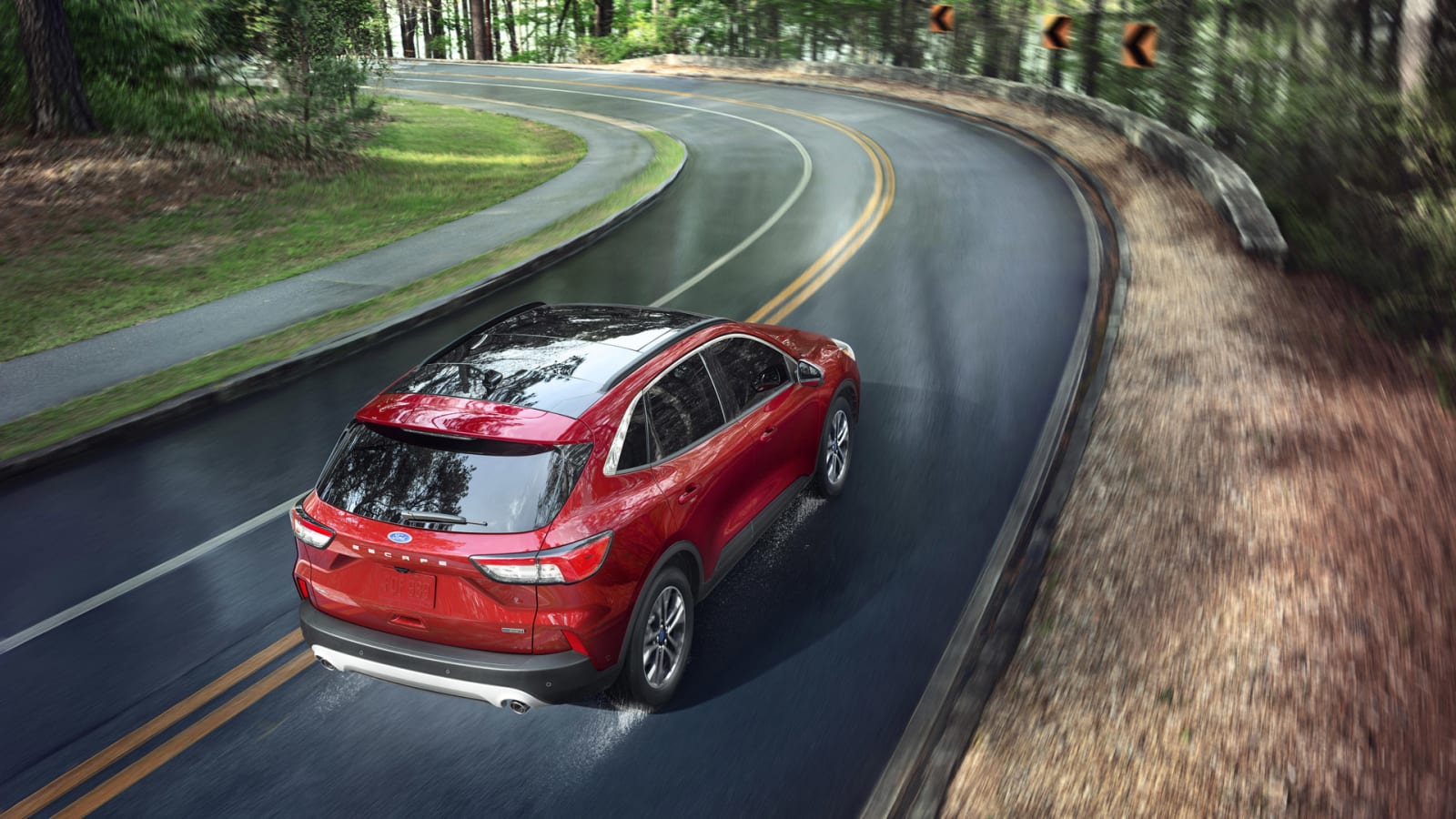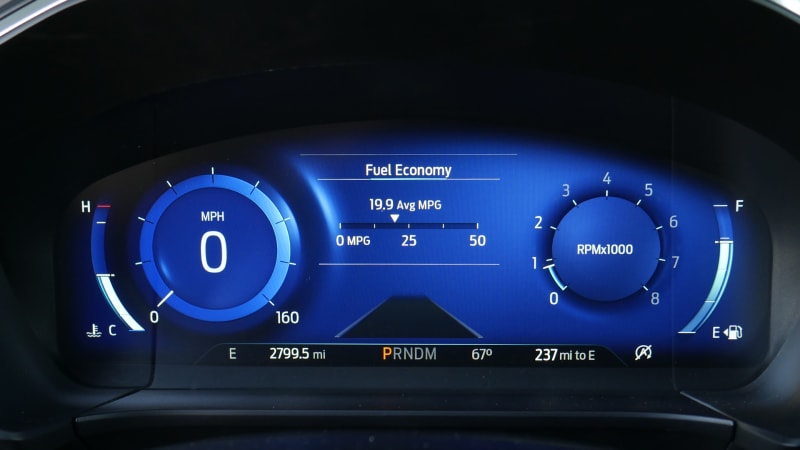You won’t see the 2022 Ford Escape on our list of the best small SUVs. Quite simply, it’s outdone by competitors that are more spacious, better to drive and have higher-quality interiors. “Mid-pack” would be the best description. “Close but no cigar” would be another.
There are some caveats to this lukewarm response, however. The Escape is one of only four compact SUVs that offer a hybrid powertrain, and one of only three available as a plug-in hybrid. At the same time, it also offers a powerful turbocharged four-cylinder that those same hybrid-offering competitors do not. As such, if you’re looking for a hybrid (and we definitely suggest that) or a burlier engine option, the Escape suddenly finds itself higher in that pack and therefore more worthy of your consideration.
Interior & Technology | Passenger & Cargo Space | Performance & Fuel Economy
What it’s like to drive | Pricing & Features | Crash Ratings & Safety Features
What’s new for 2022?
The Escape gets minor options updates and some new colors for 2022.
What are the Escape interior and in-car technology like?
We take a deep dive into the Escape interior’s quality, technology, storage and space in this Escape Interior Driveway Test, so we’ll only touch on the high and low points here.
Interior storage is plentiful and thoughtful, especially the area devoted to smartphones. The sliding back seat also adds versatility, though we’ll touch on that more below and in our Escape Luggage Test. In terms of technology, all but the most basic Escape (pictured in the first slide above) comes with a large touchscreen that’s easily seen and reached. It runs Ford’s Sync 3 interface, which is technically previous-generation tech, but only the newest, fanciest Fords like the Mach-E, Bronco and F-150 are running Sync 4. In general, we like its clean, easily read graphics featuring large icons on a clean background. It does the basics well, and although we have nits to pick with its Apple CarPlay integration, there’s far more good than bad. We’re also fans of the configurable digital instrument panel standard on the hybrids and gas-only Titanium.
On the other hand, we wouldn’t call the design particularly eye-catching, and its air vent placement can result in awfully chilly knuckles. Worse, the Escape’s interior quality has gone downhill for this generation. The doors are lined in rubbery plastic rather than cloth or pleather, the cargo area is lined in brittle, scratch-prone plastic, and we found evidence of iffy fit-and-finish. The Titanium has some of the least convincing wood trim you’ll find in a car. While other Fords, like the Bronco Sport and Maverick, have similarly mediocre materials quality, they at least are more characterful and interesting to look at, with distinctive designs and two-tone color schemes.
How big is the Escape?
The Escape basically offers average passenger and cargo space for a compact crossover. With 33.5 cubic-feet of space, the non-hybrid Escape’s cargo area can hold five sizeable pieces of luggage plus a duffel bag or two. A Honda CR-V, Toyota RAV4 and Hyundai Tucson can hold more (including in terms of maximum space), but the Escape has a trick up its sleeve: a sliding back seat that frees up extra room should you not need as much rear passenger space. Few competitors provide such a feature. Plus, there’s a good chance you won’t need all the space offered by that back seat since there is an abundant 40.7 inches of maximum legroom. A 6-footer has no problem sitting behind another 6-footer.
Both the regular and plug-in hybrids have 30.7 cubic-feet behind the back seat in its rearmost position. This is due to the cargo floor being 2 inches higher (in a packaging quirk, their 12-volt battery is relocated to underneath the trunk floor, where it not only raises the floor but eliminates the spare tire). Ultimately, it doesn’t matter that much in terms of practical cargo space, and although you’ll definitely miss the spare tire, know that the CR-V and Tucson hybrids don’t have them, either.
What are the Escape fuel economy and performance specs?
No compact crossover offers as many powertrain options as the 2022 Ford Escape.
The standard engine is a 1.5-liter turbocharged inline-three that produces 180 horsepower and 177 pound-feet of torque. Yes, only three cylinders, and there’s cylinder deactivation, so it can actually operate as a two-cylinder to save fuel. Nifty! An eight-speed automatic is standard on every gas-only Escape. Fuel economy is 28 mpg city, 34 mpg highway and 30 mpg combined with front-wheel drive, and 26/31/28 with optional all-wheel drive.
Available on the SEL and Titanium is a 2.0-liter turbo inline-four that ups output to 250 horsepower and 280 pound-feet of torque. You’ll need to fill it with premium to get that exact amount, but regular is OK. All-wheel drive is mandatory, and fuel economy comes in at 22/31/26 mpg.
The Escape Hybrid combines a naturally aspirated four-cylinder and an electric motor to produce a total system output of 200 hp. Its battery pack is replenished by recapturing energy usually lost by braking or coasting. Fuel economy is an exceptional 44 mpg city, 37 mpg highway and 41 mpg combined with FWD and 43/37/40 with AWD. This is on par with other hybrid compact SUVs.
The Escape Plug-in Hybrid (PHEV) basically just adds a much larger battery that can be recharged by plugging into your house or a public charger. This extra capacity allows for an estimated 37 miles of all-electric driving, which should be good enough to cover most commutes. Once this range is depleted, the PHEV essentially operates like the regular hybrid, recouping just enough energy through braking and the engine to contribute electricity to the motor. Its MPG-equivalent rating is 105 MPG-E, which is better than the RAV4 Prime and Hyundai Tucson Plug-in Hybrid. Basically, you’ll spend less on gas and electricity with the Escape PHEV.
Note that the Escape PHEV is only available with front-wheel drive. That’s the case with the Hyundai, but the Prime is AWD only.
What’s the Escape like to drive?
Regardless of powertrain, the Escape is one of the more engaging compact crossovers to drive with a stiff chassis and a suspension just on the firm side of comfortable. Its collection of torque-rich powertrain option only heighten its athletic bent. Unfortunately, the steering is a real letdown given what we came to expect from the last Escape and other current Fords. Its power assistance is excessive and leads to an overly artificial feel. In Normal mode, the car almost seems to make subtle corrections for you through sweeping turns – we kept checking to see if the lane-keeping assist was on, but nope. Sport mode is a bit better, but you’re then stuck with less efficient engine and transmission settings.
The base 1.5-liter turbocharged three-cylinder engine is a little sluggish off the line, but it comes to life as the turbo builds pressure. It feels smooth and responsive switching through the gears, and we’re glad Ford avoided putting a continuously variable transmission in here (as the Honda CR-V and Subaru Forester have). The more powerful 2.0-liter turbo-four is certainly quicker, but it, too, can feel a little slow off the line. Once under way, passing power from the 2.0-liter is very good due to its abundance of midrange torque, and it’s rated to tow as much as 3,500 pounds.
Despite having less torque than the gas-only powertrains, the Escape Hybrid’s torque comes early, helping it get moving quickly at low rpm. Its electronic CVT can drone a bit, especially under steady acceleration, but it’s not bothersome under most driving. The Escape Plug-in Hybrid basically just turns the dial up on the regular Hybrid, with far more time spent driving under electricity, even when the all-electric range is depleted. Like other PHEVs, there are multiple powertrain modes, which let you lock out the gas engine completely, save the electric range for later (say, after a highway drive when you enter a city), or drive mostly on electricity until stronger acceleration is needed and the gas engine automatically kicks in. In any of the above, transitions and power delivery are seamless. This is a sophisticated powertrain and although the price tag and availability are obviously a concern, it’s the most appealing Escape available.
What other Ford Escape reviews can I read?
2020 Ford Escape Interior Driveway Test
Our deep dive into the Escape’s interior, including its technology, quality, storage and space.
2020 Ford Escape Luggage Test
We took a look at its cargo capacity in a second test, showing how much can fit in the cargo area with the back slid forward and rearward.
2020 Ford Escape SE Sport Hybrid Drivers’ Notes Review
Our editors test the Escape Hybrid, finding it got fuel economy in the low to mid 30s without much effort to be thrifty.
2020 Ford Escape Titanium Drivers’ Notes Review
Our editors in Michigan spend some time with the range-topping Escape. In short, they appreciate its performance and fun driving experience, but the price and interior quality are questionable.
2020 Ford Escape First Drive Review | A renewed Focus
A first drive review of the 2020 Ford Escape, with driving impressions, specs and photos.
2020 Ford Escape Hybrid First Drive | More frugal, but still fun
Our first go behind the wheel of the Hybrid, which we found to be “no fun-sapping miserly version aimed solely at those trying to save a buck at the pump.”
What is the 2022 Escape price and what features are available?
Like many cars, it’s likely you’ll struggle to find a base model on a dealer lot, so the fact that the 2022 Escape S starts at $26,010 doesn’t really matter much (we did not know the destination charge at the time of this writing). As such, you’re almost certain to start at the next rung up the trim ladder with the SE, which not only includes more equipment, but also opens the door to more options. It is the base model for the hybrids.
Standard equipment on the SE includes 17-inch alloy wheels, rear privacy glass, proximity entry and push-button start, automatic headlights, a full array of driver assistance systems (see Safety section below) manual climate control, a height-adjustable driver seat, cloth upholstery, traditional analog gauges, a six-speaker sound system, satellite radio, four USB ports and the Sync 3 tech interface that includes an 8-inch touchscreen, Apple CarPlay and Android Auto. A key upgrade is the Convenience package, which adds an eight-way power driver seat, a power liftgate, dual-zone climate control and an upgraded steering wheel. Heated seats and steering wheel are among the additions with the Cold Weather package.
Those options are effectively included in the SEL, which differentiates itself by offering a technology package that includes a handsfree power liftgate, driver memory functions, a 12.3-inch digital instrument panel, wireless device charging and a B&O sound system. The range-topping Titanium has the same comfort/convenience items as that package (plus the 2.0-liter engine standard), but the tech items are included in its own separate package along various upper-crust features unique to the Titanium (leather-wrapped surfaces and a head-up display). It’s the only trim to include the adaptive cruise control system that optional on the SE and SEL. A panoramic sunroof is also optional on SE, SEL and Titanium.
Considering the Escape’s unremarkable interior, we think it’s best to stick with the SE and option as needed. If you want a more premium environment befitting the Titanium’s price, you’d be better off looking at a Mazda CX-5 or Hyundai Tucson.
None of the below prices include the destination charge, which was not available at the time of this writing. All-wheel drive is a $1,500 option unless otherwise indicated.
S: $26,010
SE: $27,495
SE Hybrid: $28,495
SEL: $29,970
SEL Hybrid: $30,960
Titanium Hybrid: $33,500
Titanium (AWD and 2.0-liter engine standard): $36,355
SE PHEV: $33,540
SEL PHEV: $36,275
Titanium PHEV: $38,785
All plug-in hybrids are front-wheel-drive only. None of the above prices include the $6,843 federal tax rebate.
What are the Escape safety ratings and driver assistance features?
Every Escape comes standard with some of the better-executed driver assistance technology in the industry. Dubbed Ford Co-Pilot 360, the suite of standard features includes forward collision warning with pedestrian detection and automatic emergency braking, lane-departure warning, lane-keeping assist, and blind-spot warning and rear cross traffic warning, which are rarely standard equipment. Adaptive cruise control and lane centering are optional as part of the Co-Pilot 360+ package.
The government gave the Escape top five-star ratings for overall, frontal and side crash protections. The Insurance Institute for Highway Safety named the Escape a Top Safety Pick for its sufficiently high ratings in crash tests (all “Good” scores) and for its accident avoidance tech. A “Marginal” score in the newer, tougher IIHS side crash test, but the Mazda CX-5 was the only small SUV to net a “Good” score. The IIHS also rated the Escape’s LATCH car seat anchors Good+ and we can confirm that they are indeed very easily reached and used.
Source: www.autoblog.com

